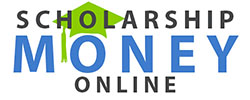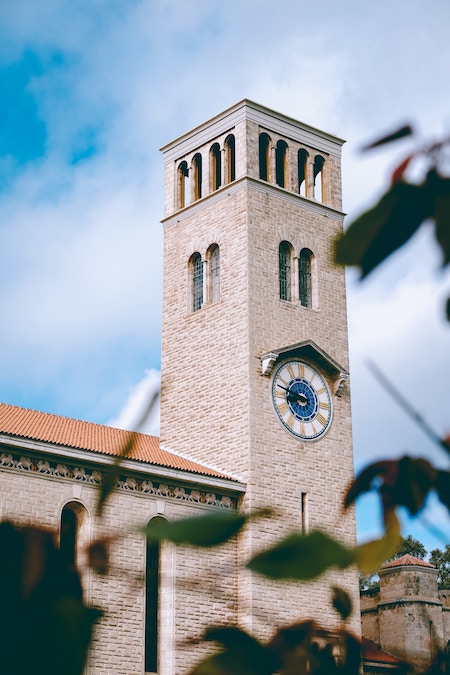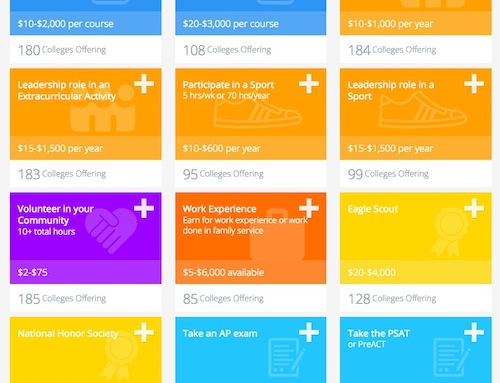When high school students gaze at the college horizon during the fall of their senior year, they often don’t see past their back porch. They opt for public colleges and universities because the sticker prices are less than those at private colleges. Yet when families dismiss private colleges as too expensive and restrict their choices to public universities, they could bypass private college scholarships and inadvertently set themselves up for piles of debt.
How is that possible? It’s fairly straightforward: private colleges have endowments that provide them with money to award in financial aid. Alumni of private colleges have a warm place in their hearts for their alma maters, and private colleges have development offices that constantly tug on those heartstrings and ask for donations. When alums make it big, they can give sizeable sums to the colleges they feel set them up for success. While we don’t hear of the smaller contributions, the big ones make headlines. Citigroup’s Sanford Weill donated $215 million to Cornell’s medical school, financier Robert Day gave $200 million to Claremont McKenna College, and IDG founder Patrick McGovern gifted $350 million to the MIT.
Of course, alumni give to public universities as well – Nike’s Phil Knight is renowned for donating hundreds of millions of dollars to the University of Oregon’s athletic programs. But private schools that are able to amass huge endowments have considerable amounts of money to invest in students who attend their universities.
Tapping into Private College Scholarships
The question then becomes, which types of students are best positioned to tap into private college scholarships? All colleges are looking to reward students who have stellar academic records, who have taken a deep dive into extracurricular activities, and who exhibit leadership. The remaining factor is financial need.
(As a reminder, financial need is the difference between cost of attendance, which is determined by the college, and expected family contribution, which is determined by the FAFSA.)
Let’s look at two need-related scenarios to explore the role of private college scholarships.
For students with a low expected family contribution, there are private college scholarships that meet 100 percent of financial need – with no student loans. U.S. News & World Report published a list of more than five dozen colleges that fit the bill. The universities range from Ivy League schools like Harvard to Carleton College, a 2,000-student liberal arts college in Minnesota. While a high-need California student who goes to a public university may receive a Cal Grant that covers all tuition and fees, a private college that meets 100 percent of need would also cover books, room and board, and transportation.
A student with a relatively high expected family contribution faces a different challenge. That family is likely to be on the hook for paying the entire cost of sending the student to a public university. If the student is high achieving, there are any number of private college scholarships that offer a “full ride” based on merit. The University of Southern California, for example, offer three full-tuition scholarships and more than a dozen partial scholarships. The University of Notre Dame’s Stamps Scholars program covers everything except room and board, and Duke’s Reginaldo Howard Memorial Scholarship offers tuition, fees, and room and board.
But private college scholarships are also available to students who may not be superstars. While some schools claim to have “need-blind” admissions, the vast majority of private universities are “need aware.” A student with an expected family contribution that makes them ineligible for need-based aid may well be in line for private college scholarships that are more discretionary in nature. That’s because schools need students who can pay more, and will incentivize them by offering smaller private school scholarships.
At that point, a student may be able to get a private college education without paying a dime more than they would at a state university. For example, the cost of attendance at the University of California, Davis is almost $36,000, but only about half of the students graduate in four years. If a family is paying the full rate and it takes the student six years to graduate (which is common), the tab will be $216,000. Find a private university with a high four-year graduation rate and scholarships to bring the net cost down to $54,000 per year, and the cost is the same. And that doesn’t even count the added earning potential of getting into the workforce two year earlier.
When fall of senior year rolls around, it’s important to apply broadly. Throw some private universities in the mix to see what kind of private college scholarships come your way.
Want more info and tips about private college scholarships? Subscribe to the Scholarship Money Online newsletter.





Leave A Comment